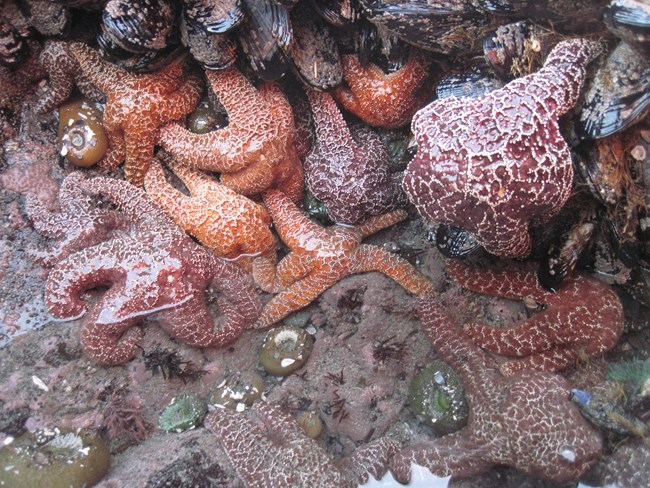
Photo: NPS An outbreak of Sea Star Wasting Syndrome, however, is devastating populations up and down the western coast of North America. Sea Star Wasting Syndrome causes tissue decay in sea stars that first appears as white lesions and eventually progresses to body parts breaking off and often death. The cause is still not clearly understood, though evidence points to a bacterial or viral pathogen. This recent outbreak, the largest ever recorded on the West Coast, was detected in 2013 in Washington by researchers in the Multi-Agency Rocky Intertidal Network (MARINe). More information as well as interactive data from MARINe sites can be found at www.seastarwasting.org. The disease has also been documented inside Redwood National and State Parks with the help of the science-based program Klamath-Network Inventory and Monitoring Program. This network was set up by the National Park Service to identify and monitor its vital resources over the long term. This long-term monitoring is tracking the progression of the disease in the park, including possible signs of recovery in the recent surge of juvenile sea stars at some sites. 
Photo: David Lohse 
Photo: NPS |
Last updated: December 7, 2020
